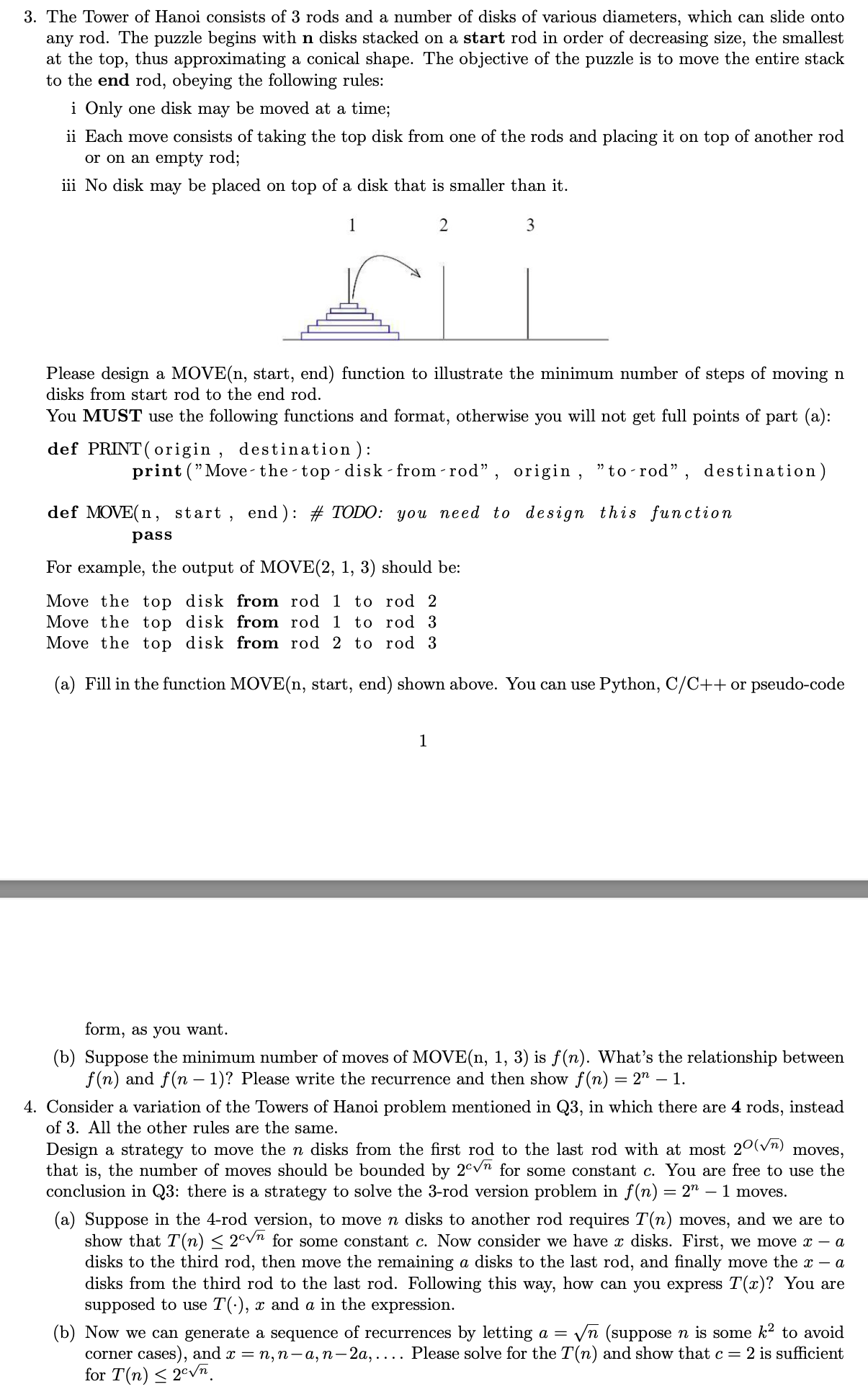Answered step by step
Verified Expert Solution
Question
1 Approved Answer
The Tower of Hanoi consists of 3 rods and a number of disks of various diameters, which can slide onto any rod. The puzzle begins
The Tower of Hanoi consists of rods and a number of disks of various diameters, which can slide onto
any rod. The puzzle begins with disks stacked on a start rod in order of decreasing size, the smallest
at the top, thus approximating a conical shape. The objective of the puzzle is to move the entire stack
to the end rod, obeying the following rules:
i Only one disk may be moved at a time;
ii Each move consists of taking the top disk from one of the rods and placing it on top of another rod
or on an empty rod;
iii No disk may be placed on top of a disk that is smaller than it
Please design a MOVEn start, end function to illustrate the minimum number of steps of moving
disks from start rod to the end rod.
You MUST use the following functions and format, otherwise you will not get full points of part a:
def PRINT destination:
printthetopdiskfromrod, origin, rod, destination
def MOVE start, end: # TODO: you need design this function
pass
For example, the output of MOVE should be:
Move the top disk from rod to rod
Move the top disk from rod to rod
Move the top disk from rod to rod
a Fill in the function MOVEn start, end shown above. You can use Python, CC or pseudocode
form, as you want.
b Suppose the minimum number of moves of MOVE is What's the relationship between
and Please write the recurrence and then show
Consider a variation of the Towers of Hanoi problem mentioned in Q in which there are rods, instead
of All the other rules are the same.
Design a strategy to move the disks from the first rod to the last rod with at most moves,
that is the number of moves should be bounded by for some constant You are free to use the
conclusion in Q: there is a strategy to solve the rod version problem in moves.
a Suppose in the rod version, to move disks to another rod requires moves, and we are to
show that for some constant Now consider we have disks. First, we move
disks to the third rod, then move the remaining a disks to the last rod, and finally move the
disks from the third rod to the last rod. Following this way, how can you express You are
supposed to use and in the expression.
b Now we can generate a sequence of recurrences by letting suppose is some to avoid
corner cases and dots. Please solve for the and show that is sufficient
for

Step by Step Solution
There are 3 Steps involved in it
Step: 1

Get Instant Access to Expert-Tailored Solutions
See step-by-step solutions with expert insights and AI powered tools for academic success
Step: 2

Step: 3

Ace Your Homework with AI
Get the answers you need in no time with our AI-driven, step-by-step assistance
Get Started


